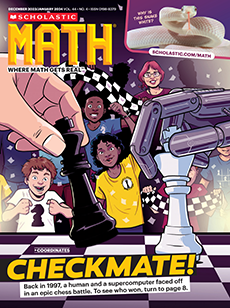Have students read the article individually. Then ask the following comprehension questions:
• How did Mikey Wren get the idea to own vending machines? (He wanted to buy something from a vending machine. Mikey’s mom told him that the profits of the vending machine go to whomever owns it.)
• How did Mikey begin his business? (He ran a lemonade stand to earn money toward buying a vending machine. For Christmas, Mikey asked for the remainder of the money he needed. He was able to buy two vending machines, and he has since bought more vending machines.)
• How does Mikey know what to buy to fill his vending machines? (He uses an app that tracks which of his snacks need to be replenished.)
• Besides running his vending machine business, how does Mikey act as a kidpreneur? (He also teaches business classes to kids.)
